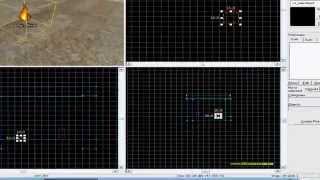Комментарии:

Average conversation in any anime.
Ответить
Mario hitten da BAZINGA with a phrog
Ответить
I've been joined your server and it's very sucks because of pro-palesgay fckrs.
Ответить
nice crop shtlord ruined the memes 👎
Ответить
the first one
Ответить
ur banned
Ответить
If I were Finn, I wouldn't be screaming in horror💀
Ответить
love the cat so cute
Ответить
IM COMMENT 69!!!
Ответить
Thats funny, anyways heres how to make a particle accelerator
Building a particle accelerator is an extremely complex and dangerous undertaking that requires specialized knowledge in physics, engineering, and safety protocols. Particle accelerators are typically large-scale, highly controlled environments, often requiring millions of dollars in funding, advanced technology, and expertise in fields like electromagnetism, cryogenics, and vacuum technology. That said, here's an outline of what goes into building a basic particle accelerator:
1. Basic Principles
A particle accelerator uses electromagnetic fields to accelerate charged particles (like electrons or protons) to very high speeds, often close to the speed of light.
These accelerated particles are then directed into collisions (for experimental physics) or can be used for other purposes like medical treatments (e.g., radiation therapy).
2. Types of Accelerators
There are two main types of accelerators:
Linear Accelerators (Linacs): Particles are accelerated in a straight line.
Circular Accelerators (Cyclotrons, Synchrotrons): Particles move in a circular path and are continually accelerated.
3. Key Components of a Particle Accelerator
Source of Particles: Typically, ions or electrons are used as the particles to accelerate. The source could be a simple electron gun or an ion source that emits charged particles.
Accelerating Structures (RF cavities): These use electromagnetic waves to accelerate the particles. In high-energy accelerators, radiofrequency (RF) cavities are used to provide rapid bursts of energy to the particles as they pass through.
Magnets (for bending paths): Large magnets, such as dipole magnets, are used to bend the path of particles in circular accelerators (or to focus them in a linac).
Vacuum System: A vacuum is essential to minimize collisions between the accelerated particles and air molecules, which would slow them down or scatter them.
Control Systems: These regulate the voltage, currents, timing, and focusing mechanisms within the accelerator.
4. Steps for a Simple Linear Accelerator (Linac)
Particle Source: Set up an electron gun or ion source that can create a steady stream of charged particles.
Electromagnetic Field: Use oscillating electric fields (generated by RF oscillators) to accelerate the particles. These are placed in linear accelerator structures—long, tube-like devices that increase the particle’s speed as they travel through.
Focus the Beam: Use quadrupole magnets to focus the beam and maintain its direction and speed.
Vacuum Chamber: Place the accelerator in a vacuum to avoid interference with air particles.
Detector: Set up a detector system to measure the properties of the accelerated particles (such as a scintillator or a tracking detector).

Who wanna talk about Subnautica?
Ответить
hi
Ответить
I don't know. These memes just don't seem as potent and funny as before 😢
Ответить
you always fail to make me laugh
Ответить
me asking my fellas on 12:26 PM
-what did u guys just send me
fellas:
-yes

Lol
Ответить
FUNNY🚡🚡🚡🚡🚡🚡
Ответить
This video was so funny🫃🫃🫃🫃🫃🫃🫃🫃🫃🫃🫃
Ответить
I lost to the part with the rhino
Ответить
I
Ответить
Video cực kỳ chất lượng, cảm ơn bạn đã chia sẻ!
Ответить





















